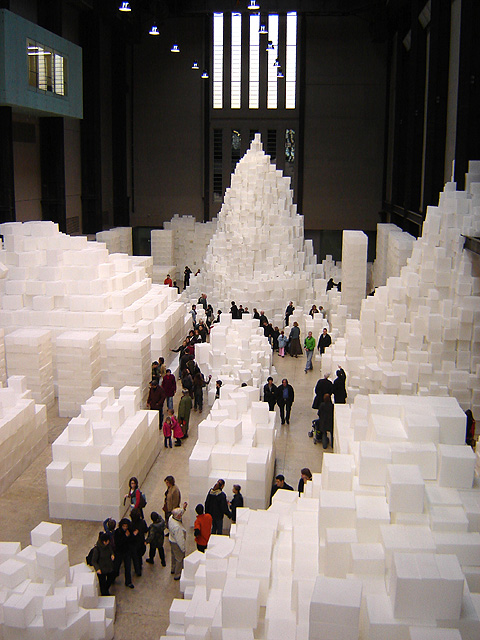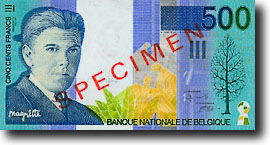|
Joseph Cornell
Joseph Cornell (December 24, 1903 – December 29, 1972) was an American visual artist and film-maker, one of the pioneers and most celebrated exponents of assemblage. Influenced by the Surrealists, he was also an avant-garde experimental filmmaker. He was largely self-taught in his artistic efforts, and improvised his own original style incorporating cast-off and discarded artifacts. He lived most of his life in relative physical isolation, caring for his mother and his disabled brother at home, but remained aware of and in contact with other contemporary artists. Life Joseph Cornell was born in Nyack, New York, to Joseph Cornell, a textiles industry executive, and Helen Ten Broeck Storms Cornell, who had trained as a nursery teacher. Both parents came from socially prominent families of Dutch ancestry, long-established in New York State. Cornell's father died April 30, 1917, leaving the family in straitened circumstances. Following the elder Cornell's death, his widow and ch ... [...More Info...] [...Related Items...] OR: [Wikipedia] [Google] [Baidu] |
Nyack, New York
Nyack () is a village located primarily in the town of Orangetown in Rockland County, New York, United States. Incorporated in 1872, it retains a very small western section in Clarkstown. It is a suburb of New York City lying approximately north of the Manhattan boundary near the west bank of the Hudson River, situated north of South Nyack, east of Central Nyack, south of Upper Nyack, and southeast of Valley Cottage. Nyack had a population of 6,765 as of the 2010 census. Setting Nyack is one of five southeastern Rockland County villages and hamlets that constitute "The Nyacks" – Nyack, Central Nyack, South Nyack, Upper Nyack and West Nyack. Named after the Native Americans who resided there before European colonization, the village consists mostly of low-rise buildings lying on the hilly terrain that meets the western shore of the Hudson River. Adjacent South Nyack is the western terminus of the Tappan Zee Bridge, connected across the Hudson River to Tarrytown i ... [...More Info...] [...Related Items...] OR: [Wikipedia] [Google] [Baidu] |
Victorian Era
In the history of the United Kingdom and the British Empire, the Victorian era was the period of Queen Victoria's reign, from 20 June 1837 until her death on 22 January 1901. The era followed the Georgian period and preceded the Edwardian period, and its later half overlaps with the first part of the ''Belle Époque'' era of Continental Europe. There was a strong religious drive for higher moral standards led by the nonconformist churches, such as the Methodists and the evangelical wing of the established Church of England. Ideologically, the Victorian era witnessed resistance to the rationalism that defined the Georgian period, and an increasing turn towards romanticism and even mysticism in religion, social values, and arts. This era saw a staggering amount of technological innovations that proved key to Britain's power and prosperity. Doctors started moving away from tradition and mysticism towards a science-based approach; medicine advanced thanks to the adopti ... [...More Info...] [...Related Items...] OR: [Wikipedia] [Google] [Baidu] |
Charles Simic
Dušan Simić ( sr-cyr, Душан Симић, ; born May 9, 1938), known as Charles Simic, is a Serbian American poet and former co-poetry editor of the '' Paris Review''. He received the Pulitzer Prize for Poetry in 1990 for ''The World Doesn't End'', and was a finalist of the Pulitzer Prize in 1986 for ''Selected Poems, 1963–1983'' and in 1987 for ''Unending Blues''. He was appointed the fifteenth Poet Laureate Consultant in Poetry to the Library of Congress in 2007. Biography Early years Dušan Simić was born in Belgrade. In his early childhood, during World War II, he and his family were forced to evacuate their home several times to escape indiscriminate bombing of Belgrade. Growing up as a child in war-torn Europe shaped much of his world-view, Simic states. In an interview from the ''Cortland Review'' he said, "Being one of the millions of displaced persons made an impression on me. In addition to my own little story of bad luck, I heard plenty of others. I'm still a ... [...More Info...] [...Related Items...] OR: [Wikipedia] [Google] [Baidu] |
Lauren Bacall
Lauren Bacall (; born Betty Joan Perske; September 16, 1924 – August 12, 2014) was an American actress. She was named the 20th-greatest female star of classic Hollywood cinema by the American Film Institute and received an Academy Honorary Award from the Academy of Motion Picture Arts and Sciences in 2009 in recognition of her contribution to the Golden Age of motion pictures. She was known for her alluring, sultry presence and her distinctive, husky voice. Bacall was one of the last surviving major stars from the Golden Age of Hollywood cinema. Bacall began a career as a model for the Walter Thornton Model Agency before making her film debut at the age of 19 as the leading lady opposite her future husband Humphrey Bogart in '' To Have and Have Not'' (1944). She continued in the film noir genre with appearances alongside her new husband in '' The Big Sleep'' (1946), '' Dark Passage'' (1947), and '' Key Largo'' (1948), and she starred in the romantic comedies '' How to Marry ... [...More Info...] [...Related Items...] OR: [Wikipedia] [Google] [Baidu] |
Installation Art
Installation art is an artistic genre of three-dimensional works that are often site-specific and designed to transform the perception of a space. Generally, the term is applied to interior spaces, whereas exterior interventions are often called public art, land art or art intervention; however, the boundaries between these terms overlap. History Installation art can be either temporary or permanent. Installation artworks have been constructed in exhibition spaces such as museums and galleries, as well as public and private spaces. The genre incorporates a broad range of everyday and natural materials, which are often chosen for their " evocative" qualities, as well as new media such as video, sound, performance, immersive virtual reality and the internet. Many installations are site-specific in that they are designed to exist only in the space for which they were created, appealing to qualities evident in a three-dimensional immersive medium. Artistic collectives such as ... [...More Info...] [...Related Items...] OR: [Wikipedia] [Google] [Baidu] |
World War II
World War II or the Second World War, often abbreviated as WWII or WW2, was a world war that lasted from 1939 to 1945. It involved the World War II by country, vast majority of the world's countries—including all of the great powers—forming two opposing military alliances: the Allies of World War II, Allies and the Axis powers. World War II was a total war that directly involved more than 100 million Military personnel, personnel from more than 30 countries. The major participants in the war threw their entire economic, industrial, and scientific capabilities behind the war effort, blurring the distinction between civilian and military resources. Air warfare of World War II, Aircraft played a major role in the conflict, enabling the strategic bombing of population centres and deploying the Atomic bombings of Hiroshima and Nagasaki, only two nuclear weapons ever used in war. World War II was by far the List of wars by death toll, deadliest conflict in hu ... [...More Info...] [...Related Items...] OR: [Wikipedia] [Google] [Baidu] |
René Magritte
René François Ghislain Magritte (; 21 November 1898 – 15 August 1967) was a Belgian surrealist artist known for his depictions of familiar objects in unfamiliar, unexpected contexts, which often provoked questions about the nature and boundaries of reality and representation. His imagery has influenced pop art, minimalist art, and conceptual art. Early life René Magritte was born in Lessines, in the province of Hainaut (province), Hainaut, Belgium, in 1898. He was the oldest son of Léopold Magritte, a tailor and textile merchant,Meuris 1991, p 216. and Régina (née Bertinchamps), who was a Hatmaking, milliner before she got married. Little is known about Magritte's early life. He began lessons in drawing in 1910. On 24 February 1912, his mother committed suicide by drowning herself in the Sambre, River Sambre at Châtelet, Belgium, Châtelet. It was not her first suicide attempt. Her body was not discovered until 12 March.Abadie 2003, p. 274. According to a legend, 13-yea ... [...More Info...] [...Related Items...] OR: [Wikipedia] [Google] [Baidu] |
Max Ernst
Max Ernst (2 April 1891 – 1 April 1976) was a German (naturalised American in 1948 and French in 1958) painter, sculptor, printmaker, graphic artist, and poet. A prolific artist, Ernst was a primary pioneer of the Dada movement and Surrealism in Europe. He had no formal artistic training, but his experimental attitude toward the making of art resulted in his invention of frottage (surrealist technique), frottage—a technique that uses pencil rubbings of textured objects and relief surfaces to create images—and Grattage (art), grattage, an analogous technique in which paint is scraped across canvas to reveal the imprints of the objects placed beneath. Ernst is noted for his unconventional drawing methods as well as for creating novels and pamphlets using the method of collages. He served as a soldier for four years during World War I, and this experience left him shocked, traumatised and critical of the modern world. During World War II he was designated an "undesirable forei ... [...More Info...] [...Related Items...] OR: [Wikipedia] [Google] [Baidu] |
Nostalgia
Nostalgia is a sentimentality for the past, typically for a period or place with happy personal associations. The word ''nostalgia'' is a learned formation of a Greek compound, consisting of (''nóstos''), meaning "homecoming", a Homeric word, and (''álgos''), meaning "sorrow" or "despair", and was coined by a 17th-century medical student to describe the anxieties displayed by Swiss mercenaries fighting away from home. Described as a medical condition—a form of melancholy—in the Early Modern period, it became an important trope in Romanticism. Nostalgia is associated with a longing for the past, its personalities, possibilities, and events, especially the " good ol' days" or a "warm childhood". There is a predisposition, caused by cognitive biases such as rosy retrospection, for people to view the past more favourably and future more negatively. When applied to one's beliefs about a society or institution, this is called declinism, which has been described as "a ... [...More Info...] [...Related Items...] OR: [Wikipedia] [Google] [Baidu] |
Kurt Schwitters
Kurt Hermann Eduard Karl Julius Schwitters (20 June 1887 – 8 January 1948) was a German artist who was born in Hanover, Germany. Schwitters worked in several genres and media, including dadaism, constructivism, surrealism, poetry, sound, painting, sculpture, graphic design, typography, and what came to be known as installation art. He is most famous for his collages, called '' Merz Pictures''. Early influences and the beginnings of Merz, 1887–1922 Hanover Kurt Schwitters was born on 20 June 1887 in Hanover, at Rumannstraße No.2, now: No. 8, the only child of Eduard Schwitters and his wife Henriette (née Beckemeyer). His father was (co-)proprietor of a ladies' clothes shop. The business was sold in 1898, and the family used the money to buy some properties in Hanover, which they rented out, allowing the family to live off the income for the rest of Schwitters's life in Germany. In 1893, the family moved to Waldstraße (later renamed to Waldhausenstraße), future site of ... [...More Info...] [...Related Items...] OR: [Wikipedia] [Google] [Baidu] |








